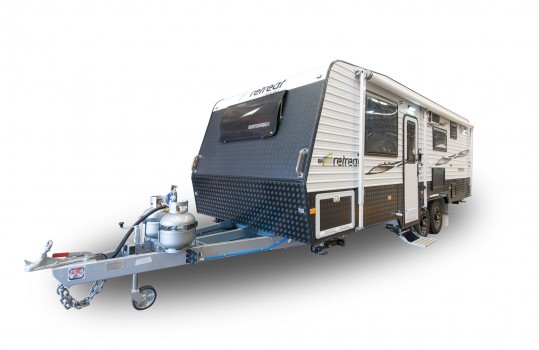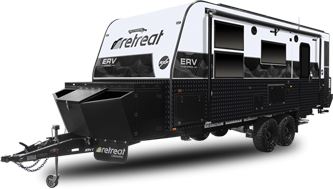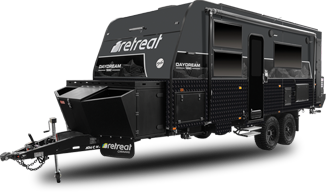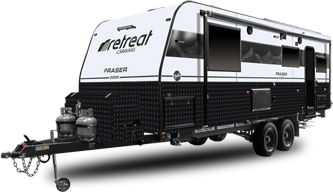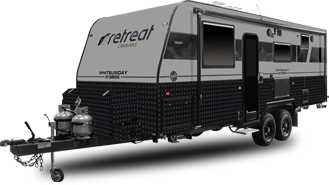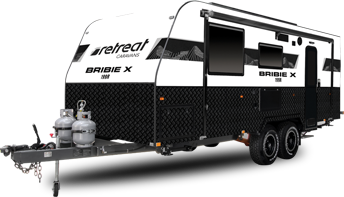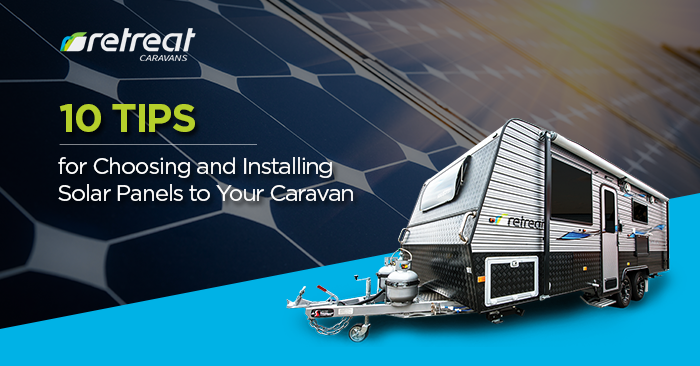
10 Tips for Choosing and Installing Caravan Solar Panels
If you don’t want to sacrifice luxury items such as fridges, TVs and mobile devices when you’re in your new luxury caravans, you need a caravan solar power system. A complete cure to noise and air pollution, solar panels are a necessity for caravanners who live off the grid.
Solar panels work by absorbing sun’s energy and storing it for future use.
How does solar power work?
Solar panels are activated when sunlight hits the photo-voltaic solar cells, which absorb solar energy which in turn is converted to electricity. Next, the solar charger stores the charge in a battery. However, you need to use a power regulator to prevent overcharging the batteries. Adding an inverter will help you convert DC to AC, allowing you to use AC-appliances in your caravan.
Advantages of Solar Power
When you’re out in the wilderness for a week, even if you watch no more than one hour of TV per day, your battery will not last very long. Fortunately, with solar panels you can enjoy unlimited power supply. From saving money to saving space, solar panels are ideal for eco-friendly camping!
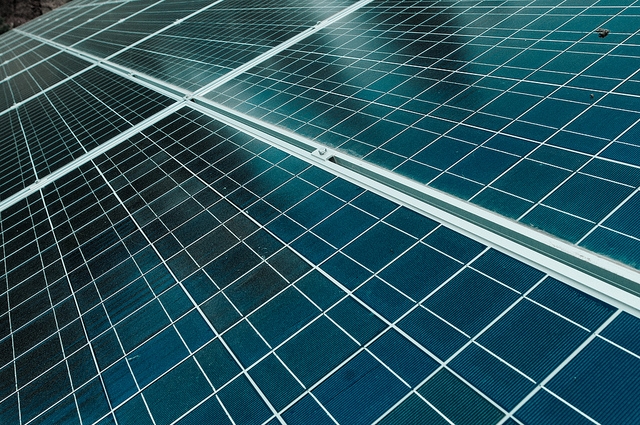
-
Silent
Unlike gensets and most other power sources, solar panels operate silently and have zero emission.
-
Economical
Yet another significant bonus to buying solar panels for caravans is saving money. Even though the initial cost of solar panels is quite high, your long-term savings more than make up for it. That is because you will never have to shell out for power anymore.
-
Convenient
Solar panels require nothing but the sun. Considered perfect for caravanners, solar panels do not need regular maintenance. Unlike generators, they don’t need fuel or oil. All you have to do is fix the panels where they can get plenty of sunlight; and before you know it, your battery is fully charged!
-
Battery Saver
Solar panels can continually operate for 20-30 years without issues. Solar energy keeps your battery topped up; thus you avoid full discharges, preventing battery deterioration.
-
Eco Friendly
Solar panels do not emit harmful emissions to the environment and hence are ranked among the most environment friendly alternative energy solutions today. Nevertheless, select a campsite location where your solar system can get maximum exposure to sunlight.
Things to consider in choosing a solar panel system for your caravan
For caravanners, portability is a prime consideration in choosing a solar panel system. Nevertheless, there are countless other parameters to ensure before picking a solar power panel for your rig. If you fail to choose the right solar panel system, the financial loss might not be your only cause of worry!
Image Credit to Solar Camping Australia
-
As much sunlight as possible
Solar panels are fixed beneath the safety panels. In order to maximise their output, they need full exposure to sunlight.
For a solar panel system that uses a crystalline panel, even the slightest shadow will affect its output significantly.
-
Check with the local dealer
After you install the solar panel to your caravan, the next step is to connect the leisure battery. Even though, the connections seem easy to do, there are certain procedures that need to be followed. Often, your caravan dealer might have specifics about connecting a solar panel via unique adaptors made exclusively for your caravan. So, consult your local dealer first before finalising your solar installation.
-
Check your battery
Solar panels work best when connected to a good battery. Moreover, you must also recharge the battery every time the charge falls below 50%. Keeping your battery charged while in storage will help prolong its lifespan.
De facto, if your batteries have not been stored properly during the winter months, you may have to replace them.
-
Clean the panels regularly
Dust and dirt can greatly reduce the panels’ ability to absorb solar energy. Use a microfiber or non-abrasive cloth to clean your solar panels and keep them at top efficiency.
-
Maximise power output with MPPT
Known as Maximum Power Point Tracking, MPPT helps to parallelize your solar charge controller to the current and voltage emitted by the solar panels to create the highest Output Power. works by merging the power produced by the solar charge controller and the solar panels to create the highest possible combined output. MPPT is in-built to your charge controller. The device helps to boost the panels’ ability to absorb solar energy by 30%. If you also connect your panels in a series circuit, wattage loss can be also be eliminated.Moreover, whenever your leisure battery is charged, the MPPT will decrease the voltage by increasing the current. Ensure that you connect nothing but matching solar panels, when connecting them in series.
-
Voltage Drop
To minimise voltage drop, use appropriate size wires and cables. They must be the right length and size for the total current you expect them to draw. Generally, the shorter and thicker the wire, the better it regulates voltage drop.
Mismatch in voltage readings between the battery and the regulator will occur if the two are placed too far away from each other.
How to Install a Solar System to your Caravan
You can install your caravan solar panels yourself and save some money. It’s easy enough to do. But first, have your caravan pre-wired for solar by a professional and then follow the tips below.
Image Credit to solar4rvs
-
Types of Solar Panels
Solar panels come in various types to suit different needs and budget.
-
Mono Crystalline and Poly Crystalline
Mono crystalline and poly crystalline solar panels are ideally suited as rooftop fixtures. The former is made from a single layer of silicon crystals while the latter consists of multiple layers of silicon crystals.
-
Amorphous
Also called semi-flexible panels, amorphous solar panels are portable panels that can easily be re-oriented following the sun’s position. Furthermore, being portable, amorphous panels are easy to clean and can be stored away safely when not in use.
-
How many solar panels do you need?
Prior to finalising your solar panel installation, you must first know how much solar power you will need:
-
List all the appliances in your caravan
-
Calculate the current drawn hourly per appliance using the below equations
-
Decide on the number of hours you’ll be using each appliance per day
-
Calculate a roundup of the total sun and peak sun hours you get in your parked or destined location
-
Calculate the current drawn hourly per appliance using the below equations:
-
Power (W)= Current (I or A) x Voltage (V); where W is watts, I is current, A is amperes and V is voltage;
-
Energy (Wh)= Power (W) x Time (h); where Wh is Watt Hour, W is watts and h is hours;
-
The Capacity of your Battery (Ah)= Energy (Wh) / Voltage (V); where Ah is Amperes per hour, Wh is Watt Hour and V is voltage;
-
Solar Power (Current per hour)= Total Power used per day (I/h) / Time available for charging
-
On the average, however, one or two solar panels are sufficient for a caravan of normal size.
-
What to buy other than Solar Panels
If you’re doing the installation on your own, you will need a few other items, such as mounting brackets and a cable extension, among other things:
-
Solar Regulator
Regulators for solar panels help to store energy without overcharging the batteries. There are two types of solar regulators: Maximum Power Point Tracking (MPPT) and Pulse Width Modulated (PWM). The MPPT delivers 30% more output than the latter!
-
Batteries
Choose a battery with an efficient power density, high DOD, and high cycle life. Lithium batteries are a good choice for caravans mainly because of their compact size. Consider your available storage space when choosing a battery.
-
Inverter
An inverter converts AC to DC. So if you have AC-appliances in your caravan, you need to install an inverter.
Watch this solar caravn installation video guide by marsol.com.au
-
Connecting the Solar System to your caravan
-
After deciding where to fix the solar panels, drill holes where your pre-wiring suggests
-
Screw on the mounting brackets
-
Using a glue specific for caravan use, mount the solar panels on the brackets firmly so they do not come off during violent storms.
-
Use a wire connector to join the solar panel to your caravan wirings (positive to positive; negative to negative).
-
Connecting the Solar System to the Batteries
Connect your batteries in parallel configuration; i.e., the terminals must be joined positive to positive and negative to negative.
-
Connecting the Solar Regulator
Place the regulator near your batteries. Most solar regulators have three sets of wires:
-
The first set of wires is for the solar panel connection
-
Second wire set is for the caravan load
-
The Third set of wires should be connected to the positive and negative terminal of one battery that is connected to the other.
-
Are you done?
Crosscheck if all your connections are firm and correct. Check whether your connections are correctly done. Protect your wirings behind a sturdy layer of insulation. Next, check if the sun is up, switch on your regulator, and you’re good to go.
Conclusion
It is definitely possible for you to set up a fail-proof caravan solar system. If you’re thinking of taking the DIY route, you must research and understand as much as you can about modern caravan solar power systems.
There are many ways to install solar power to your rig. However, be sure to have someone knowledgeable assist you throughout this project.
With more than a quarter century of efficient performance with minimal maintenance, solar power is the future of luxury caravanning!


